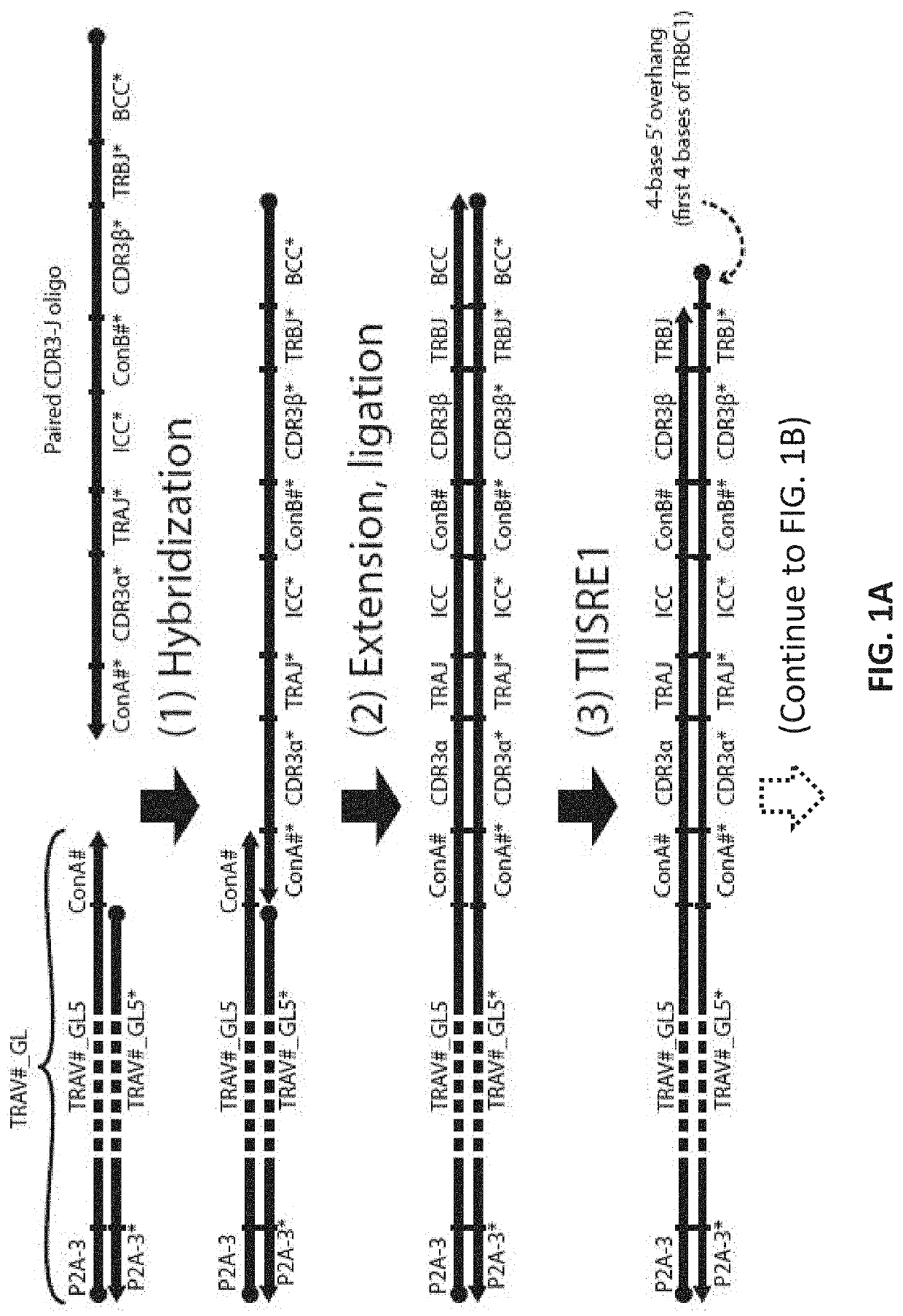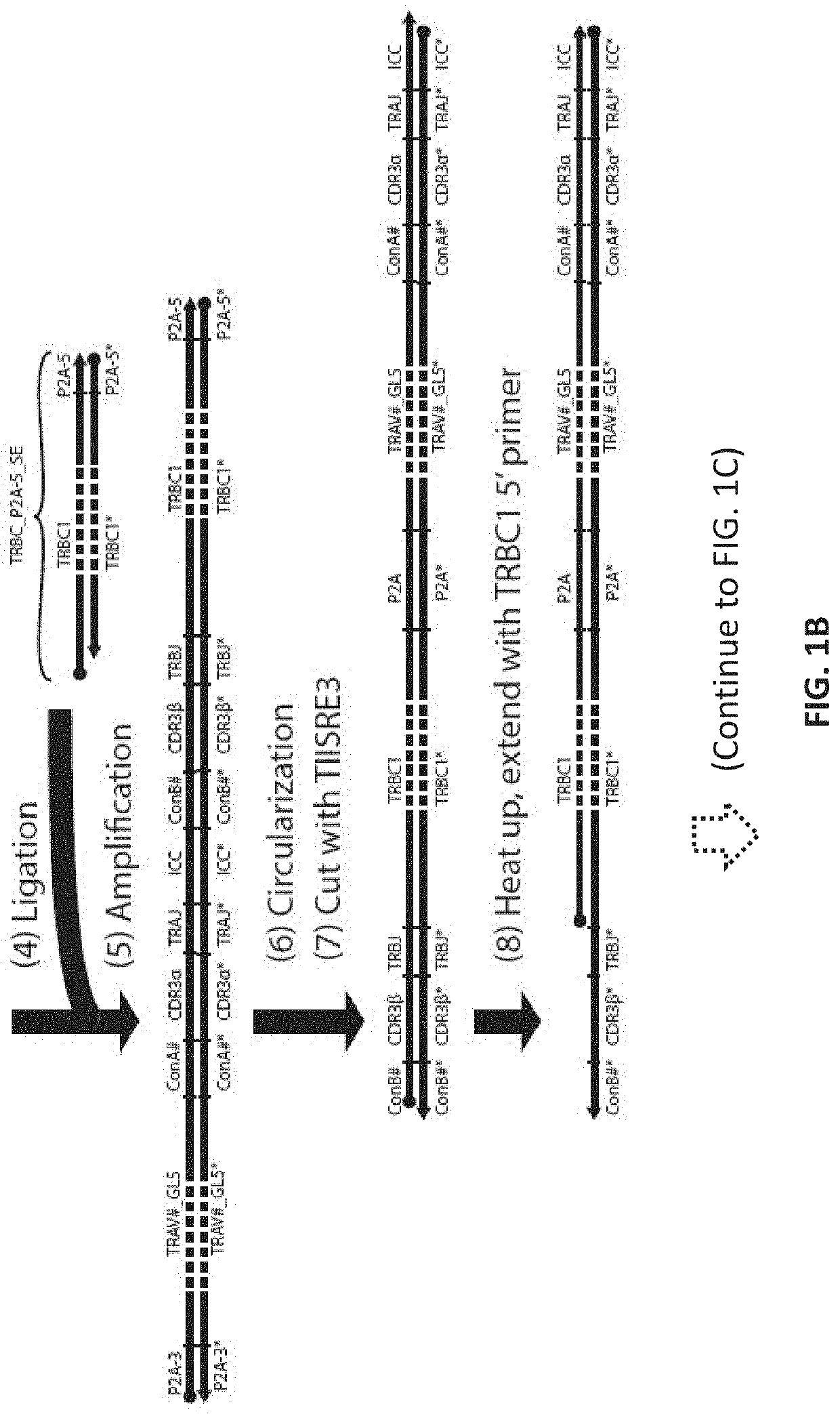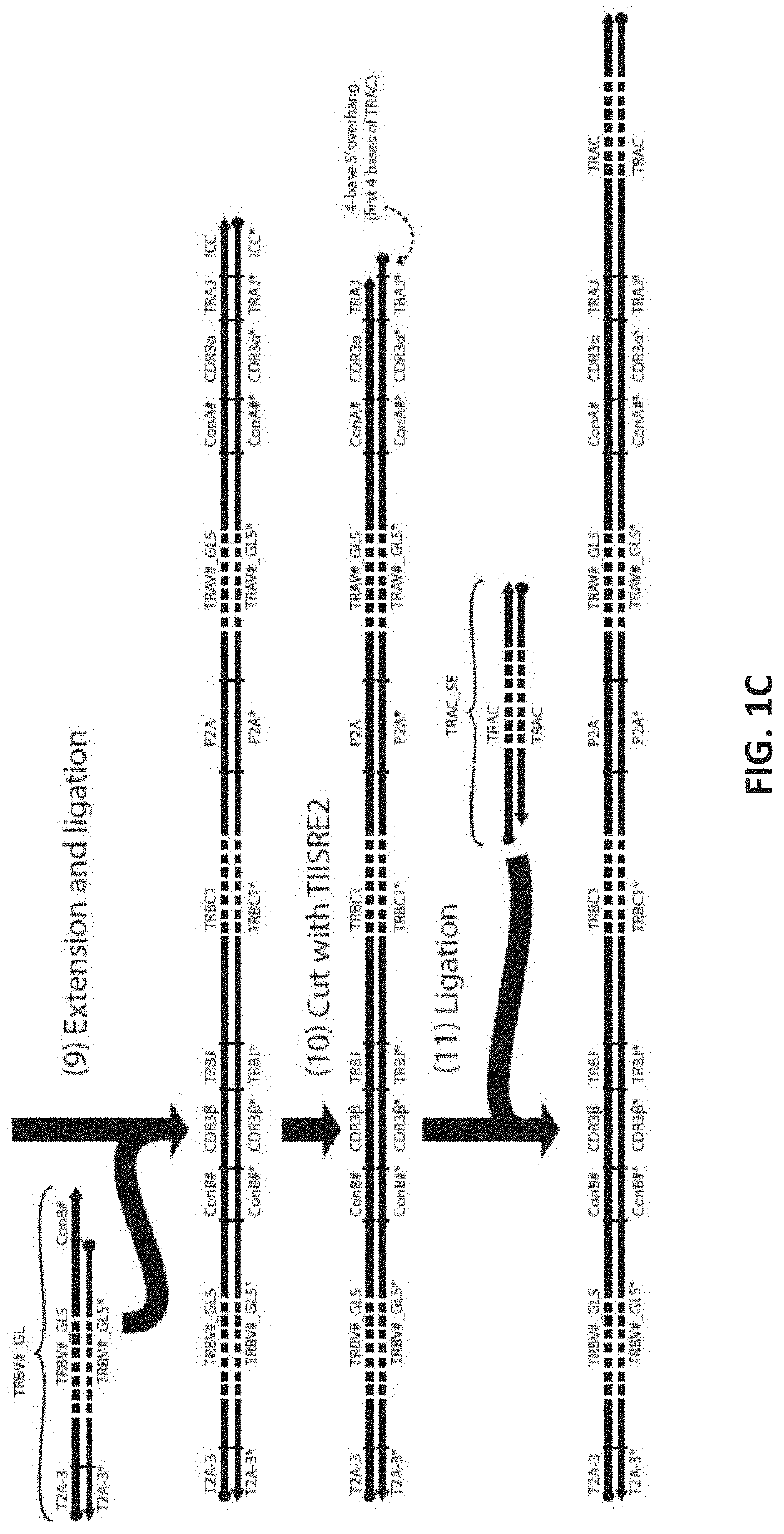Compositions and methods for t-cell receptor gene assembly
a technology of t-cell receptor and assembly method, which is applied in the field of composition and assembly of t-cell receptor gene, to achieve the effect of high throughput, quick and cost-effectiv
- Summary
- Abstract
- Description
- Claims
- Application Information
AI Technical Summary
Benefits of technology
Problems solved by technology
Method used
Image
Examples
example 1
g a CDR3-J Oligonucleotide Pool to a Full-Length, Expressible TCR Pool
[0137]This example uses 3 Type IIS Restriction Enzyme to create sticky ends. Such enzymes are commercially available. In this example, two enzymes that create a 4-bp 5′ overhang (for example, BbsI, BbvI, BcoDI, BsaI, BsmBI, FokI, etc.) and one restriction enzyme that creates a blunt end or 3′ overhang (for example, BseRI, BsrDI, BtsI, MlyI, etc.) are used. The optimal enzyme set to use can depend on practical factors (e.g., local availability, cutting efficiency, star activity) and can be easily chosen experimentally. Here, the first two restriction enzymes are called TIISRE1, TIISRE2, and the last restriction enzyme is called TIISRE3.
[0138]In this example, the paired CDR3-J oligonucleotides are synthesized in ‘head-to-tail’ orientation with respect to the coding sequence of the alpha and beta CDR3-J. In other words, the alpha CDR-3J and beta CDR-3J are synthesized in the same 5′ to 3′ direction. The resultant ful...
example 2
odon Diversification Using Human TRAV and TRBV Sequences
[0149]In this example, a thermodynamics-based algorithm is provided to design codon-diversified ConA # and ConB # sequences. The algorithm is written in MATLAB language. Some variables and custom functions used in this algorithm will be described in the ‘note’ section below, with the rest described in the comment of the code or self-explanatory to skilled artisans. Some custom functions rely on thermodynamics-based simulation of DNA hybridization using publicly available thermodynamic parameters (e.g., ΔH and ΔS for base pair stacks) and models (e.g., ΔS as a function of loop size). These parameters and models have been extensively published by John SantaLucia Jr. Skilled artisan can readily write these functions from scratch or with the help of publicly available software packages such as NUPACK. The algorithm contains two stages: initial design and codon diversification, which are described in Script1 and Script2, respectivel...
example 3
Sequences Derived from Mouse TRAV and TRBV Genes
[0158]This example provides codon-diversified connector sequences derived from mouse TRAV and TRBV genes. Similar to the above examples, ConA is the connector for a specific TRAV sequence, and ConB is the connector for a specific TRBV sequence. The codon diversification was performed using the same methods as described in Example 2. Table 1 shows codon-diversified connector sequences derived from mouse TRAV genes. Table 2 shows codon-diversified connector sequences derived from mouse TRBV genes. In Tables 1 and 2, The gene name and accession number is shown for each V gene in the first column, and the corresponding connector sequence is shown in the second column.
TABLE 1Connector sequences derived from mouse TRAV genesSEQConnector of mouse TRAVID NO:genesConnector Sequence1> ConA ofTCAAAGACTCTGCCTCATACCTCTTrav1|ENSMUST00000103567.52> ConA ofCTGAGAGACGCAGCTGTGTATTACTTrav2|ENSMUST00000196939.13> ConA of Trav3-GGGGACTCAGCCGTGTACTTCT1|ENSM...
PUM
| Property | Measurement | Unit |
|---|---|---|
| Composition | aaaaa | aaaaa |
Abstract
Description
Claims
Application Information
 Login to View More
Login to View More - R&D
- Intellectual Property
- Life Sciences
- Materials
- Tech Scout
- Unparalleled Data Quality
- Higher Quality Content
- 60% Fewer Hallucinations
Browse by: Latest US Patents, China's latest patents, Technical Efficacy Thesaurus, Application Domain, Technology Topic, Popular Technical Reports.
© 2025 PatSnap. All rights reserved.Legal|Privacy policy|Modern Slavery Act Transparency Statement|Sitemap|About US| Contact US: help@patsnap.com



